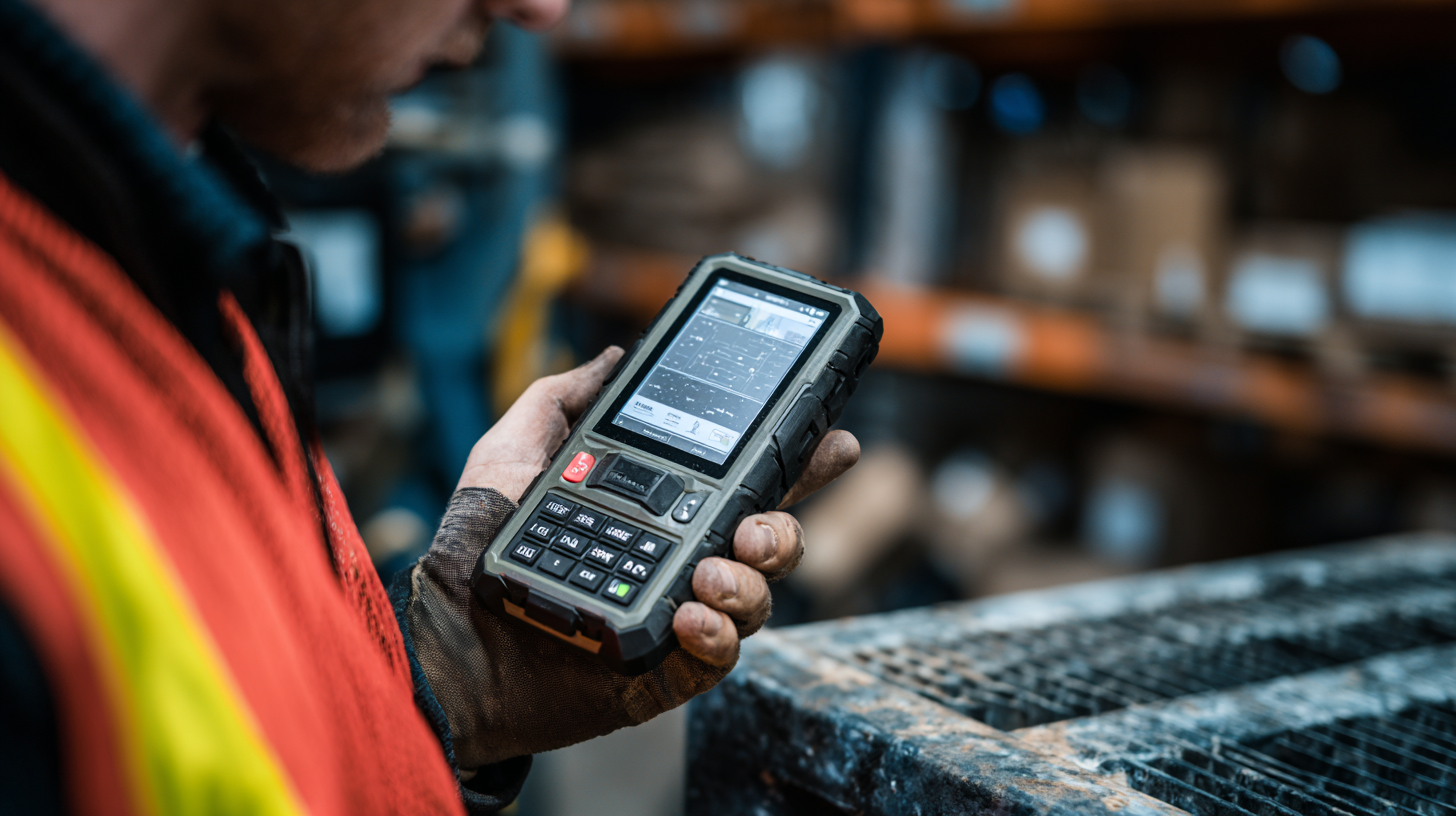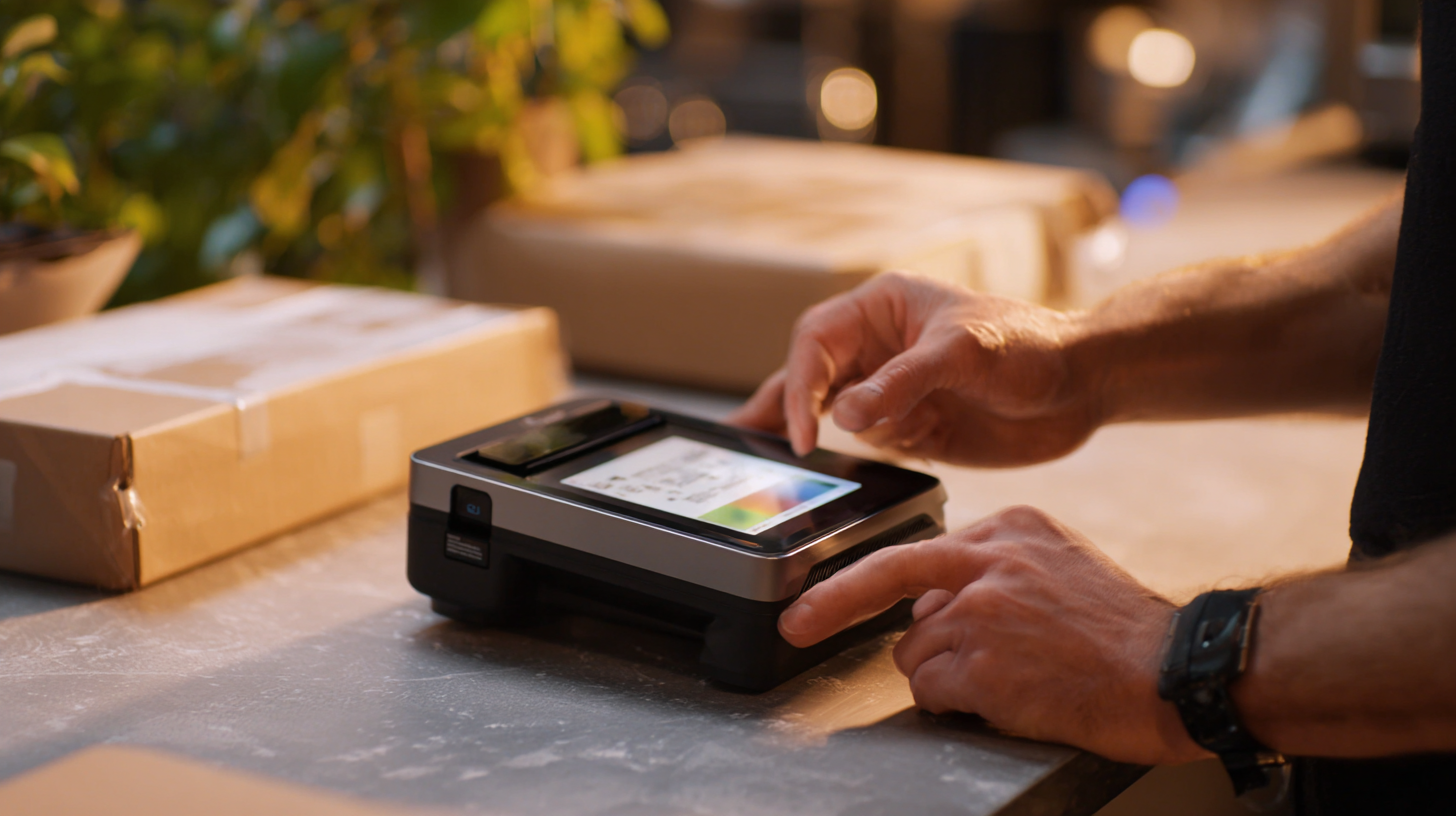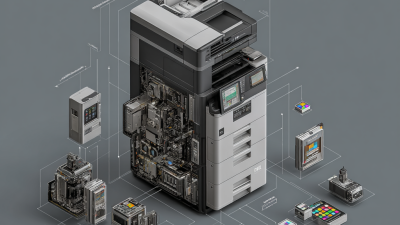In today's fast-paced digital landscape, the introduction of handheld printers has significantly transformed modern workflows across various industries. According to a report by MarketsandMarkets, the handheld printer market is projected to reach USD 8.73 billion by 2024, showcasing an annual growth rate of 7.1%. These compact devices have revolutionized the way businesses approach printing tasks, enabling on-demand production of labels, barcodes, and documents directly at the point of need. This shift not only enhances productivity by reducing turnaround time but also minimizes waste associated with traditional printing methods. Furthermore, a study by Statista reveals that over 47% of organizations have adopted mobile printing solutions, underscoring the increasing reliance on handheld printers to streamline operations and improve efficiency. As organizations continue to adapt to dynamic market demands, the impact of handheld printers on workflow optimization is undeniable, setting a new standard for operational excellence.

 Handheld printers are emerging as a game-changer in the realm of business efficiency and productivity. According to a recent report from Smithers Pira, the global market for portable printing solutions is projected to reach $920 million by 2026, reflecting a compound annual growth rate (CAGR) of 6.2%. This surge can be attributed to the increasing demand for on-the-go printing, enabling businesses to streamline their operations and reduce delays associated with traditional printing methods. Industries ranging from retail to logistics are adopting these innovative tools, which allow employees to print labels, invoices, and other essential documents directly at the point of need.
Handheld printers are emerging as a game-changer in the realm of business efficiency and productivity. According to a recent report from Smithers Pira, the global market for portable printing solutions is projected to reach $920 million by 2026, reflecting a compound annual growth rate (CAGR) of 6.2%. This surge can be attributed to the increasing demand for on-the-go printing, enabling businesses to streamline their operations and reduce delays associated with traditional printing methods. Industries ranging from retail to logistics are adopting these innovative tools, which allow employees to print labels, invoices, and other essential documents directly at the point of need.
The versatility and convenience of handheld printers not only enhance workflow efficiency but also contribute to significant cost savings. A study by Technavio highlights that organizations employing portable printing solutions have reported a 20% increase in overall productivity while simultaneously cutting down on printing costs by as much as 30%. This impressive shift is driving companies to reevaluate their workflow strategies, leading to a more agile approach in handling tasks that require immediate documentation. As handheld printers continue to evolve with advancements in technology, their impact on business processes will only grow, marking a significant transformation in how organizations operate in the fast-paced digital landscape.
The handheld printing device market has seen remarkable growth in recent years, driven by technological advancements and the increasing demand for mobile solutions. According to recent industry reports, the global handheld printer market is projected to reach a valuation of over $3 billion by 2028, showcasing a compound annual growth rate (CAGR) of approximately 10% from 2021. This surge can be attributed to the rise of remote work and the necessity for efficient printing solutions in diverse sectors such as retail, logistics, and healthcare.
Moreover, statistics reveal that more than 60% of businesses have adopted handheld printers to streamline their operations. These devices not only enhance productivity by enabling printing on-the-go but also cater to the need for flexibility in dynamic working environments. Features like wireless connectivity and lightweight designs are making them increasingly appealing, further solidifying their role in modern workflows. As companies continue to emphasize innovation and efficiency, the handheld printing sector is poised for sustained expansion, setting the stage for exciting developments in the industry.
Mobile printing has become a critical asset in contemporary workspaces, enhancing workflow flexibility by allowing employees to print from virtually anywhere within the office. According to a study by IDC, the mobile printing market is expected to grow significantly, reaching nearly $1 billion by 2025, demonstrating the increasing reliance on portable printing solutions. This surge can be attributed to the need for immediate output, reducing downtime, and increasing productivity in fast-paced environments where quick decision-making is essential.
Furthermore, businesses are experiencing a transformation in how work is executed, with mobile printing enabling a seamless work experience across various devices. A report from Canon revealed that organizations utilizing mobile printing experience up to a 30% improvement in operational efficiency. The integration of handheld printers complements the growing trend of remote work and flexible office layouts, allowing teams to stay connected and responsive. As companies continue to adopt innovative technologies to streamline processes, the role of mobile printing will undoubtedly become more pivotal in supporting dynamic workflows and enhancing overall output in modern workplaces.

The integration of handheld printers into modern workflows presents significant financial benefits, particularly in terms of cost savings and sustainability. Businesses can reduce their operational expenses by eliminating the need for bulky, stationary printers and the associated maintenance costs. Handheld printers enable on-demand printing, which minimizes waste created by excess prints and the stockpiling of materials. This efficiency not only conserves resources but also streamlines inventory management, allowing companies to adapt quickly to changing demands without incurring unnecessary costs.
Moreover, the sustainability aspect of handheld printers cannot be overlooked. These devices often use less electricity and generate fewer emissions compared to traditional printing methods. By adopting eco-friendly printing solutions, organizations contribute to a greener planet while enhancing their corporate social responsibility profiles. The shift towards handheld printing provides an opportunity for companies to align their business practices with environmental goals, making it a strategic choice that supports both cost-effectiveness and sustainability in today's eco-conscious market.
This chart illustrates the comparative cost savings and sustainability benefits of integrating handheld printers into modern workflows, based on industry research.
The printing industry is undergoing a significant transformation driven by innovations in handheld printer technology. As smart features become increasingly prevalent, the market for these advanced printing solutions is expected to grow from an estimated $257.2 million in 2023 to $926 million by 2030, reflecting a compound annual growth rate of 20.1%. North America is leading the global market during this expansion, showcasing the importance of integrating technology into modern workflows.
Recent appearances of Chinese companies at prestigious tech innovation exhibitions, such as the "Tech Forever" exhibition in France, highlight the international collaboration and sharing of ideas in the printing sector. This vibrant exchange of technology and creativity underlines the forward momentum of the industry. Events like the upcoming Formnext Asia in Shenzhen will further illuminate advancements in 3D printing and additive manufacturing, revealing how these innovations are shaping printing's future and diversifying its applications across various industries.
| Feature | Description | Benefits | Use Cases |
|---|---|---|---|
| Wireless Connectivity | Allows printing from mobile devices via Bluetooth or Wi-Fi. | Increased mobility and convenience for on-the-go printing. | Field services, events, and sales presentations. |
| Compact Design | Lightweight and portable design suitable for various environments. | Easy to carry and use in numerous locations. | Home offices, outdoor events, and travel. |
| Smart Features | Integration with apps for user-friendly control and monitoring. | Enhanced user experience and automation of tasks. | Inventory management, shipping label creations. |
| Eco-Friendly Printing | Utilization of sustainable materials and energy-efficient processes. | Reduces environmental impact and appeals to eco-conscious users. | Businesses focused on sustainability and compliance. |
| Battery Life | Long-lasting battery for extended use without charging. | Greater reliability for field work and remote locations. | Remote jobs, outdoor activities, and emergency services. |






